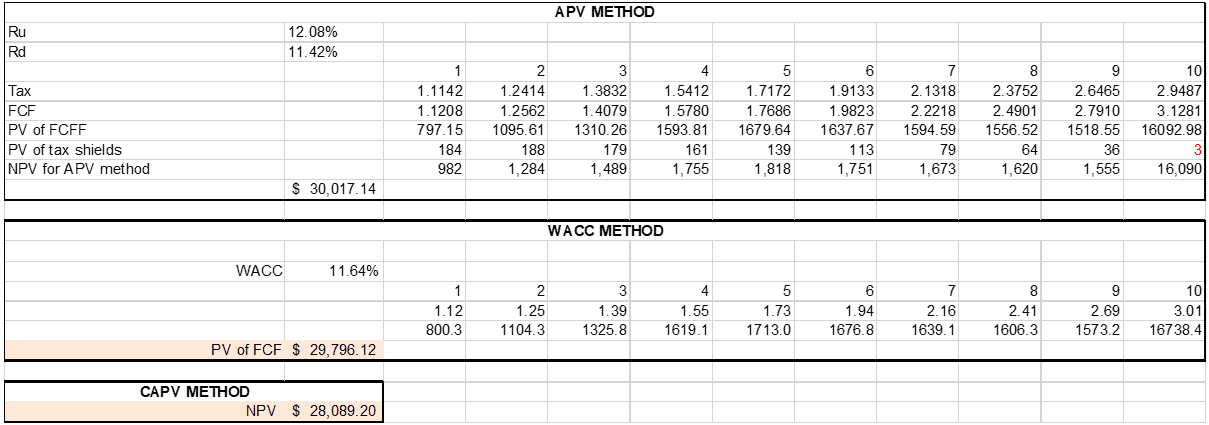This RJR Nabisco case study analysis looks deeper into how the stream of FCFs and tax shields were determined for the three different valuations methods, which are APV, WACC, and CAPV.
Richard S. Ruback
Harvard Business Review (289056-PDF-ENG)
July 12, 2002
Case questions answered:
- For each of the three plans (Prebid, Management, and KKR):
a) Calculate the free cash flow for each year
b) Estimate the tax shield for each year
c) Estimate the unlevered discount rate
d) Value RJR Nabisco - Estimate the stock price of RJR under each of these plans.
Not the questions you were looking for? Submit your own questions & get answers.
RJR Nabisco Case Answers
This case solution includes an Excel file with calculations.
RJR Nabisco Firm Value Calculations – Details and Assumptions
The value of the firm RJR Nabisco has been evaluated for three different scenarios using three different valuation methods, which are APV, WACC, and CAPV.
This report delves deeper into how the stream of FCFs and tax shields were determined for these methods.

Estimation of Tax Rates for each of the three buyout proposals:
- Prebid – To calculate Profit Before Taxes (PBT) for RJR Nabisco, we deduct the interest expense from EBIT. From PBT, Net Income is subtracted to calculate the taxes & tax rates for each year.
- Management and KKR – PBT is calculated as operating income minus the net of interest expense and amortization amount.
Estimation of Cash Flow for each of the three buyout proposals: FCF = EBIT (1 – Tax Rate) + Depreciation – Capex – Changes in WC + Proceeds from asset sales
- Prebid – The EBIT numbers have been plugged from exhibit 5
- Management and KKR – EBIT numbers are calculated as Operating Income minus the Amortization value. For KKR, the noncash interest expense has been ignored.
Adopting the going concern principle, it is assumed that RJR Nabisco will continue to function profitably in the future.
The cash flows from the 11th year (1999 onwards) have been assumed using the cash flow of 1998 as a base with a growth rate of 3% (approx. GDP growth for the US). Hence, the discounted cash flows for the 10th year include the…
Unlock Case Solution Now!
Get instant access to this case solution with a simple, one-time payment ($24.90).
After purchase:
- You'll be redirected to the full case solution.
- You will receive an access link to the solution via email.
Best decision to get my homework done faster!
Michael
MBA student, Boston
 Best decision to get my homework done faster!
Best decision to get my homework done faster!